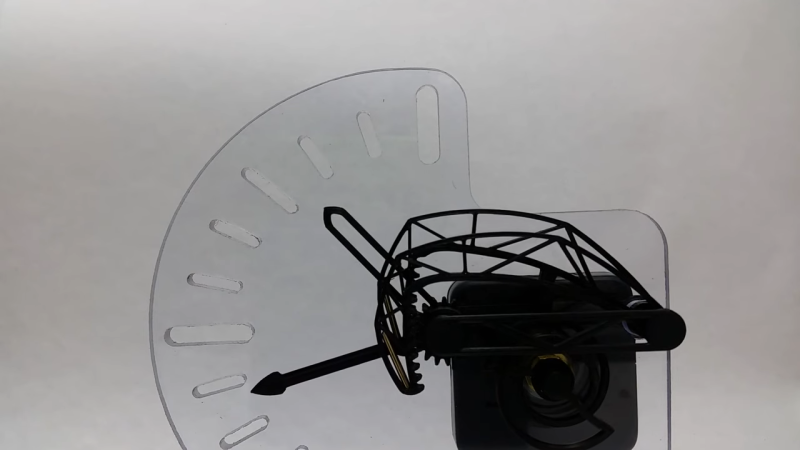Retrograde clocks are unique, in that they eschew the normal fully-circular movement for the hands. Instead, the hands merely sweep out a segment of a circular arc, before jumping back to their start position to begin again. They’re pretty rare to find, but [Jamie Matthews] decided he had to have one. Thusly, he elected to build his own!
For his build, [Jamie] started with a regular off-the-shelf clock movement you might find in any hobbyist clock build. From there, he affixed his own witches’ brew of racks and gears to the output in order to create the desired semi-circular mechanism. The arcane mechanism enables the clock to tell time over roughly a 180-degree arc.
It’s relatively simple to make one of your own, too. The parts are all readily 3D printable, with [Jamie] reporting it took less than 8 meters of filament to produce the geartrain for his build. You can even print the clock face if you don’t want to CNC cut it out of acrylic.
Overall, it’s a fun look at an often-forgotten part of our horological history. Desktop 3D printing really does enable the creation of some exciting, different clock designs. Video after the break.
















Well, this is a new kind of clock I didn’t know existed. More importantly, I still don’t know why it exists in the first place.
I suspect though am no expert that the concept of displaying time this way came about as it is similar to the water/sand clocks and was likely originally driven by that sort of mechanism – sand falls and the arm amplifies the tiny weight changes on the lever so its much clearer than just how big the pile of sand has gotten and then at the bottom/top of the cycle it needs to reset so is set up to drop all the fallen sand and start again…
As I say though no expert at all, but I’m sure I’ve seen drawings of a similar seeming mechanism in some historical context I can’t place right now.
I have seen in in watches with the explanation that you can read the full time even when your sleeve is half covering the watch